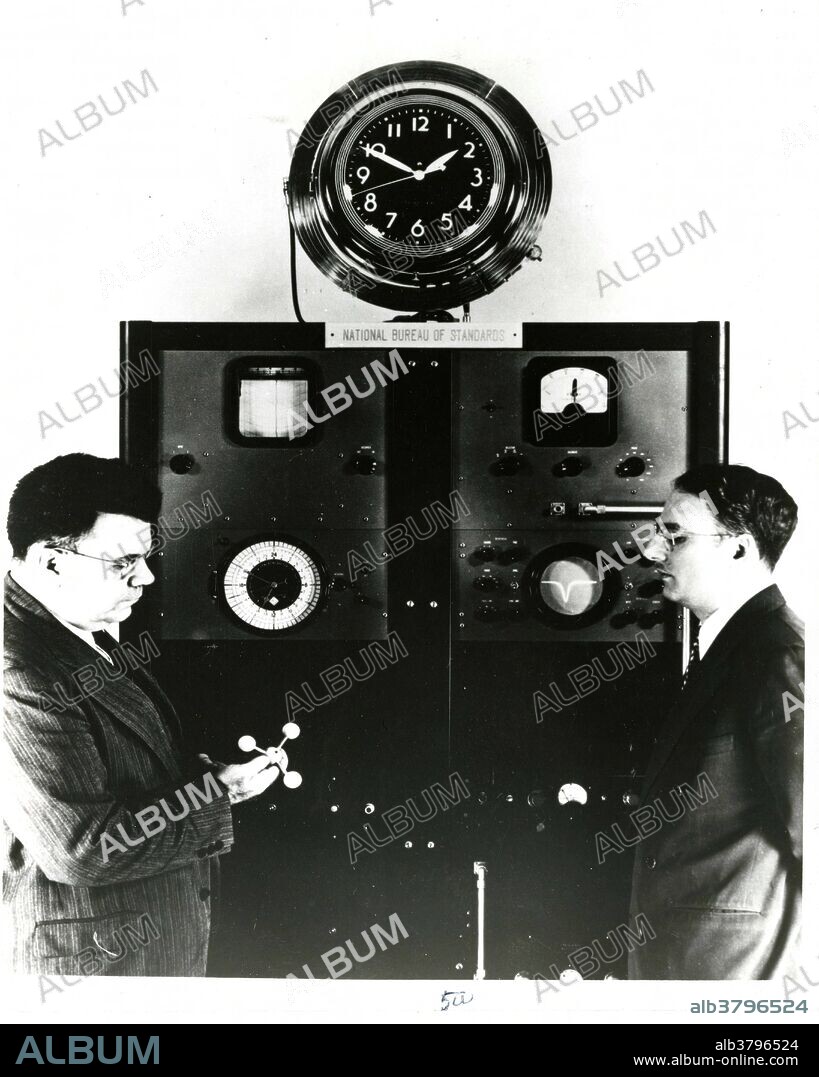alb3796524
Edward Condon with First Atomic Clock

|
Añadir a otro lightbox |
|
Añadir a otro lightbox |



¿Ya tienes cuenta? Iniciar sesión
¿No tienes cuenta? Regístrate
Compra esta imagen.
Selecciona el uso:

Título:
Edward Condon with First Atomic Clock
Descripción:
Ver traducción automática
Edward Condon (at left) with the first atomic clock. Edward Uhler Condon (March 2, 1902 - March 26, 1974) was a distinguished American nuclear physicist, a pioneer in quantum mechanics, and a participant in the development of radar and nuclear weapons during WWII as part of the Manhattan Project. He was the director of the National Bureau of Standards (now NIST) from 1945 to 1951. An atomic clock is a clock device that uses an electronic transition frequency in the microwave, optical, or ultraviolet region of the electromagnetic spectrum of atoms as a frequency standard for its timekeeping element. The principle of operation of an atomic clock is not based on nuclear physics, but rather on atomic physics; it uses the microwave signal that electrons in atoms emit when they change energy levels. The first atomic clock was an ammonia maser (microwave amplification by stimulated emission of radiation) device built in 1949 at the U.S. National Bureau of Standards (NBS, now NIST). The world's first atomic clock using the ammonia molecule as the source of vibrations.
Personas:
Crédito:
Album / NIST/Science Source
Autorizaciones:
Modelo: No - Propiedad: No
¿Preguntas relacionadas con los derechos?
¿Preguntas relacionadas con los derechos?
Tamaño imagen:
4641 x 5801 px | 77.0 MB
Tamaño impresión:
39.3 x 49.1 cm | 15.5 x 19.3 in (300 dpi)
Palabras clave:
AMERICA • AMERICANO • BLANCO Y NEGRO • CIENCIA • ESTADOS UNIDOS DE AMERICA • EXACTA • EXACTITUD • FAMOSA • FAMOSO • FIGURA • FÍSICA (CIENCIA) • FÍSICO (CIENTIFICO) • FOTO • FOTOGRAFIA • GENTE • HOMBRE • HOMBRES • IMPORTANTE • INSTRUMENTO • MAQUINA • MASCULINO • MECANICA CUANTICA • METROLOGIA • NATIONAL BUREAU OF STANDARDS • PERSONA • PERSONALIDAD • PERSONALIDADES • PRECISION • RELOJ • RETRATO DE HOMBRE • S. XX • SIGLO XX • TECNOLOGÍA • TECNOLÓGICA
 Pinterest
Pinterest Twitter
Twitter Facebook
Facebook Copiar enlace
Copiar enlace Email
Email
